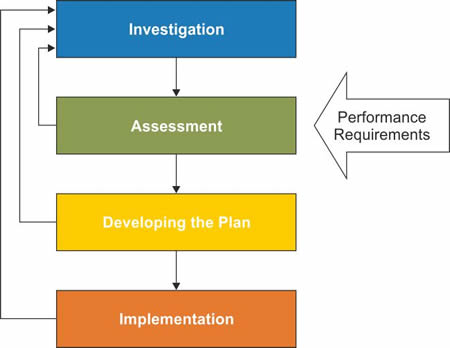A number of supporting standards have been produced that complement EN752. Of particular relevance to the SRM is EN13508 Condition of Drain and Sewer Systems Outside Buildings which provides information to support the investigation stage of the integrated sewer system management process.
Functional Requirements
EN752:2008 identified 13 functional requirements of drain and sewer systems under the following headings:
- Protection from flooding;
- Maintability - the system should be designed to allow appropriate maintenance activities;
- Protection of surface receiving waters;
- Protection of groundwater;
- Prevention of odours, toxic, explosive and corrosive gases;
- Prevention of noise and vibration;
- Sustainable use of products and materials;
- Sustainable use of energy;
- Structural integrity and design life;
- Maintaining the flow;
- Watertightness;
- No endangering adjacent structures and utility services;
- Inputs quality - controlling incoming effluent to protect the system and the environment.
The Standard accepts that for each functional requirement there can be legal requirements, public expectations and financial constraints.
Performance Requirements
EN752:2008 describes a process whereby performance requirements can be developed locally for each system, taking into account European, national or local regulatory requirements and other local information. Specifically some requirements may need to take account of how the sewer system fits into the wider urban drainage system and the river basin.
The Standard recommends different levels of performance; one as a trigger to justify upgrading action and the other as a target to aim for in upgrading.
Integrated Sewer System Management
EN752:2008 describes a process for the management of all aspects of drain and sewer systems through a four-stage process illustrated below.

The new SRM Procedure describes one method of implementing the EN752 Integrated Sewer System Management Process. The four principal activities shown above are equivalent to the four sectors of the SRM process diagram.
Updated: 12/04/2013